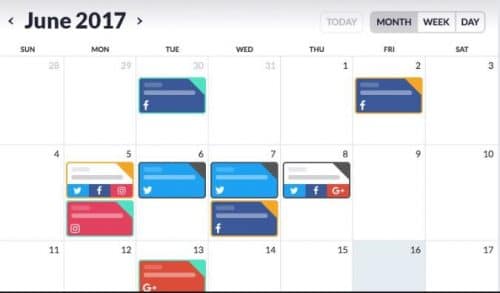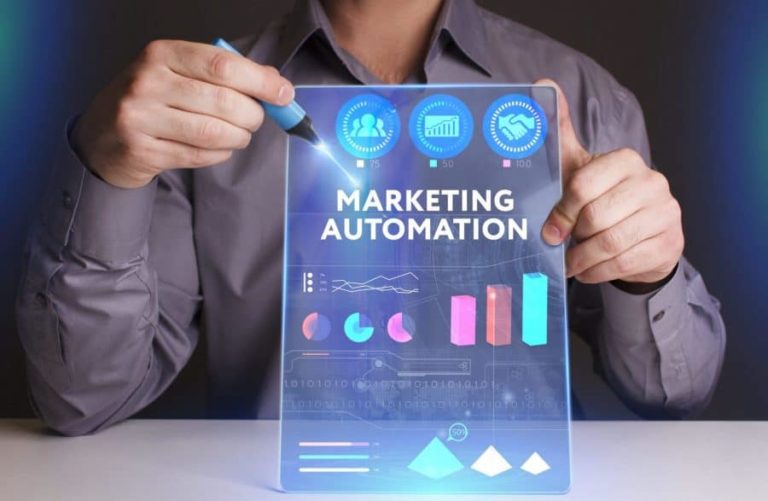Just 20 years ago, the word ‘automation’ conjured images of Jetson-Esque homes and factories, with robots handling daily household chores and jobs being put on autopilot with the push of a button. Today, we know that automation doesn’t mean physical robots and button-pushing — we have something way better.
Marketing automation tools aren’t exactly new in 2020, but this year, they’re poised to become more of a priority for marketers. Research shows that the marketing automation industry is expected to reach $25.1 billion annually by 2023 — a massive jump from just $6.7 billion in 2019.
Will marketing automation become a top priority for your business in 2020 and beyond? Here’s what you need to know:
Marketing Automation Definition and Overview
In its simplest form, marketing automation refers to software and tools that automate marketing tasks and processes that are usually performed manually. The goal is to streamline and simplify these processes while driving sales and revenue.
In essence, marketing automation is all about simplifying the roles and responsibilities of marketers and salespeople. Tasks that are time-consuming or prone to error are usually higher automation priorities for companies. The goal is to take out much of the manual work from your marketing strategy without sacrificing those activities. In turn, this frees up time for marketers to execute strategy and focus on results.
Before we dive into specific use cases, let’s look at what marketing automation is not:
- Email marketing – yes, you can automate your email marketing, but that’s only a small part of what marketing automation offers.
- A tool solely for marketers – sales teams can also gain an edge with marketing automation tools, especially when it comes to aligning sales and marketing departments
- A done-for-you tool that takes no skill – strategy and execution play pivotal roles in marketing automation success, and there is no value without effort.
To date, three out of four companies are using automation in some way. The most common reason among marketers is to personalize the customer experience at scale. So far, the results are promising: Companies using marketing automation are filling their sales pipelines with more marketing-driven leads than companies who don’t use automation. In addition, salespeople are spending 84% of their time selling versus 67% for companies that aren’t using marketing automation.
Here’s how companies are using marketing automation tools to free up valuable resources and grow their sales:
Lead Generation
Lead generation takes many forms, from email newsletter opt-ins to landing pages to social media ads and more. When marketing automation is applied, your lead generation efforts are transformed into a consistent, repetitive workflow that moves your lead through your marketing funnel without manual involvement from you (once you’ve established your workflow, that is).
Here’s a sample of how it might look:
- A user visits your website and opts in to receive your free ebook
- You send the ebook to them via email as promised, with no manual involvement from you
- Their email address is automatically listed in your database for future communications
This same process can be applied to a number of marketing efforts. HubSpot research shows that companies that automate lead management see a 10%+ increase in revenue within 6-9 months.
Lead Nurturing
Once leads land in your funnel, you need to keep the conversation going to help them move through your funnel. This process is referred to as lead nurturing, and marketing automation tools can help you create high-touch relationships with minimal effort.
Here’s an example of how it might work:
- A user opts in to a specific ad, such as a free download
- They checked a box to receive weekly communications from you
- They’re automatically entered on your email list
- Automation tools will categorize your new lead based on why they opted in, as well as their preference to receive weekly communications
- The lead is placed in your weekly newsletter list and will receive only those emails from you
According to HubSpot, businesses that invest in lead nurturing make 50% more sales at a cost 33% less than non-nurtured prospects. With marketing automation, companies are able to stay top of mind without having to invest time and effort in reaching out to each lead.
Retargeting
While our blog Paid Media: The Best Bang For Your Buck has more in-depth information on different types of online advertising, marketing automation brings us to the topic of retargeting. If you’ve ever visited a website, left without purchasing, and then kept seeing ads for the product you viewed, you’ve been the recipient of a retargeting campaign.

Companies that use retargeting software place a tracking pixel on their web pages, which stores a cookie in the user’s browser history. When someone leaves your website without making a purchase, that pixel will track their online activities and display appropriate ads based on their viewing history.
Retargeting is one of the most effective forms of marketing automation, with research showing consumers are 70% more likely to convert when they see retargeted ads. And given that the abandoned shopping cart rate is about 76% and costs roughly $4.6 trillion in lost e-Commerce sales, retargeted ads could be one of the best investments you make in marketing automation.
Social Media Posting
Content creation itself hasn’t yet been perfected by automation, but you can remove some of your manual obligations for distribution. Tools like Hootsuite and Buffer can connect directly with your social media accounts. You can front-load your content into these posting tools, which will publish your content on the day and time you select.

Though simple in nature, this form of marketing automation can be a huge time saver if you’re good at planning. You can plan an entire month’s worth of content ahead of time, then set your social media tools to publish daily on your behalf to hold your audience’s attention and keep the conversations going.
As you can see, marketing automation takes many forms and we’ve only listed a few of them here. In the end, effective marketing automation can save you countless dollars and man-hours of labor every month all while increasing revenues and customer satisfaction and minimizing errors. At BrandDad Digital, we know a thing or two about automation and specialize in workflow automations, automation sequences, and automated email campaigns. All you need to do to get started is contact us to speak with a professional today.
How will you use marketing automation in 2020?









